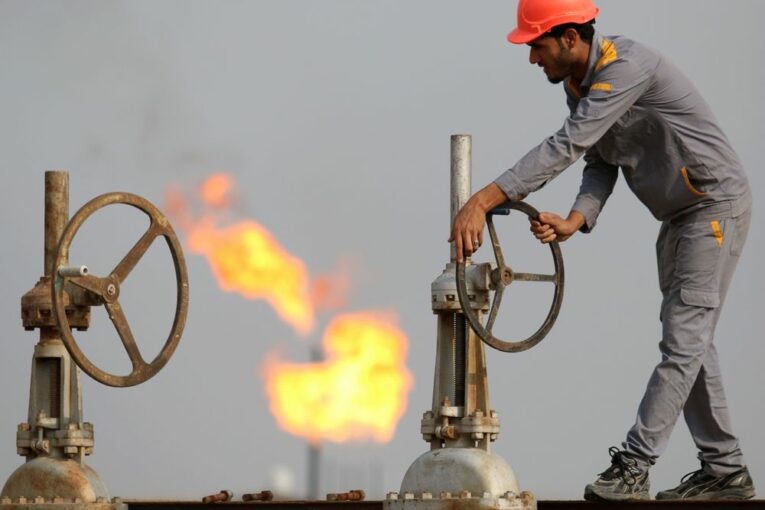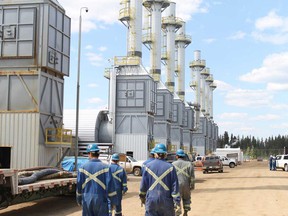
After enduring the unimaginable soul-sucking horror of 2020, watching U.S. crude trade at US$80 last Friday for the first time in seven years brought many energy investors to near tear-shedding elation.
It’s been a vindication for those who fought against the endless bearish narratives of “new normals” and “permanent demand destruction.” But with global oil demand nearly back to pre-COVID levels and oil prices already higher, the time for look backs and victory laps are over. Where do we go from here? How much more upside remains in energy stocks given strong year-to-date performance and how should investors be positioned for the remainder of 2021 and for what I believe to be a multi-year bull market for oil?
Unquestionably, energy share price performance this year has been strong with the S&P TSX Capped Energy Index up 71 per cent year-to-date, while some actively managed energy funds are up more than twice that amount. It would be easy then to think that energy stocks are fully valued and the trade is over. Would it surprise you that valuations today are cheaper than they were on Jan. 1, 2021? How can that be?
Much of the appreciation from the second half of 2020 to the beginning of this year had been about repairing the devastation of the early months of 2020, which witnessed some stocks falling by over 90 per cent. Now, with oil having rallied from US$52 to US$80 despite stellar stock performances, energy equities’ trading multiples have actually contracted.
Using a baseline West Texas Intermediate US$70 per barrel as a valuation reference point, the average energy stock I follow trades today at only 3.1 times its enterprise value to its annual cashflow and this would compare to a historical multiple of around 7x-9x.
More importantly, on a free cashflow basis, the same basket of energy stocks is trading at an average free cashflow yield of 26 per cent even after the strong year-to-date performance.
If energy stocks are still attractively priced how should investors be positioned to maximize the upside in the remaining months of 2021?
My playbook for 2021 centred on buying shares in small and mid-cap stocks in January when oil prices were low, believing then that given normalizing demand and constrained supply growth that oil would rally to US$60 or higher by the summertime.
Were that to come to pass, I thought the lens through which investors viewed these companies would meaningfully change, leading to a significant rerating in value. Fortunately, the scenario played out and some small cap energy stocks are up over 200 per cent year-to-date. While valuations in my opinion remain extremely attractive should investors stick exclusively with small caps or is there a more tactical strategy to employ now?
While small caps remain the hunting ground for multi-bagger potential, for part of my fund I’m adopting the mindset of the generalist institutional investor who has largely been left out of this year’s massive energy rally. With just under three months left to recapture lost performance, combined with daily headlines of energy crises and multi-year highs of oil and natural gas prices, the general investors’ potential new entry could lead to an even stronger finish to the year.
But what will they most likely buy? A small cap stock that has gone up 400 per cent, or a large cap stock that has lagged others, offers better trading liquidity and ease of position entry, and whose poorer performance offers a perceived margin of safety? For that reason, I have modestly reduced my small cap exposure for that of large caps tactically heading into year end, with material fund weightings in both Cenovus Energy Inc. and Suncor Energy Inc.
Given Cenovus’ rapid deleveraging, I believe the company will soon be able to announce a meaningful return of capital initiative with the ability to buy back over 10 per cent of its shares outstanding, given a now 25 per cent free cashflow yield using US$70. While it is up over 80 per cent year-to-date, it has lagged smaller cap names making it an easier buy while still trading at a 3x multiple discount to its U.S. peers.
Suncor, while not a name that I would traditionally own, stands in the pole position of potential recipient of generalist funds flow in my opinion. Poor recent execution at its core oilsand projects has led to substantial underperformance this year (35 per cent increase year-to-date versus 65 per cent for WTI) and the bar of expectations feels so low that any glimmer of hope that it has regained its operational stride could allow for a catch-up trade. Given that it is trading by my estimate at a 19 per cent free cashflow yield and a 2x multiple discount to its U.S. peers at US$70, it offers attractive potential upside into the end of the year.

The biggest challenge for an energy investor today is that everything looks so compelling, from oil stocks to natural gas to oilfield services, be they small, mid, or large cap. The job of the professional energy investor is to figure out where to maximize the upside over the remaining months of the year while trying to manage volatility in a sector that has seen very strong performance to date.
If I’m right that we will hit all-time high oil prices in the next two to three years, leading to a multi-year bull market, then the performance that we have seen so far is just the beginning and will lift all boats. Yet, there are times to be a bit more tactical in anticipating where the likely new funds flow will come from and where they are likely to go so as to maximize performance.
Given such still depressed energy stock valuations, we do not need higher oil prices for energy stocks to continue to rally, but instead for the large generalist investor to start to believe in the longevity of this pricing cycle.
Should that begin to increasingly happen, combined with what I believe to be the imminent announcement of meaningful plans to return capital back to shareholders by the sector at large with the third-quarter reporting, we have the potential ingredients for a continued energy rally heading into year end. With COVID-19’s impact on oil demand increasingly becoming a distant memory, the oil party is just getting started.
You can read more of the news on source
